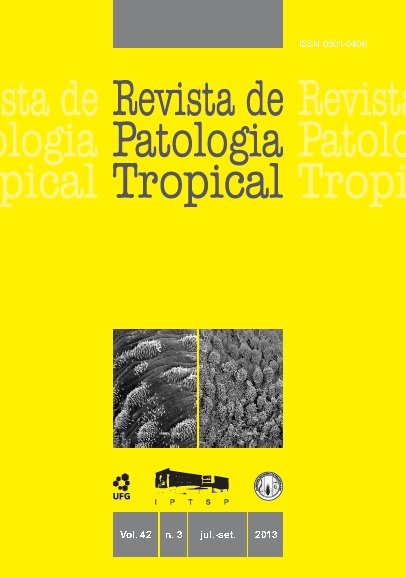INFESTATION OF Aedes aegypti (LINNAEUS, 1762) (DIPTERA: CULICIDAE) DETERMINED BY OVIPOSITION TRAPS (OVITRAPS) IN THE CITY OF COSTA RICA, MATO GROSSO DO SUL STATE, BRAZIL
DOI:
https://doi.org/10.5216/rpt.v42i3.26929Keywords:
Distribution models, Entomological surveillance, Vector controlAbstract
Objective: to determine characteristics of Aedes aegypti infestation in the city of Costa Rica, such as spatial distribution and its correlation with climatic factors, in order to use the data for vector control. Methodology: Fifty-one weekly samplings were carried out using ovitraps, distributed at 60 collecting points. Results: Index variance/mean showed an aggregate distribution for Ae. aegypti. Tests for fit to a negative binomial distribution showed that all samples from the population gave excellent correspondence with such a distribution, which was not the case for either positive binomial or Poisson distributions. Density of Ae. aegypti eggs increased according to the rate of rainfall. Conclusion: The rainfall was the abiotic factor that significantly influenced the level of vector infestation. The aggregate distribution observed for this species can be explained by environmental factors, such as the presence of materials disposed of in backyards and vacant lots, and by its genetic traits.Downloads
Downloads
How to Cite
Issue
Section
License
The manuscript submission must be accompanied by a letter signed by all authors stating the full name and email address, confirming that the material has not been published or is under consideration for publication elsewhere, and agreeing to transfer copyright in all media and formats for Journal of Tropical Pathology. The authors will not be paid for published articles. They are solely responsible for the content of those articles, even if the Editor holds the right to adjust them to the norms of the journal.
The reviewers will not be paid for the peer review process.

